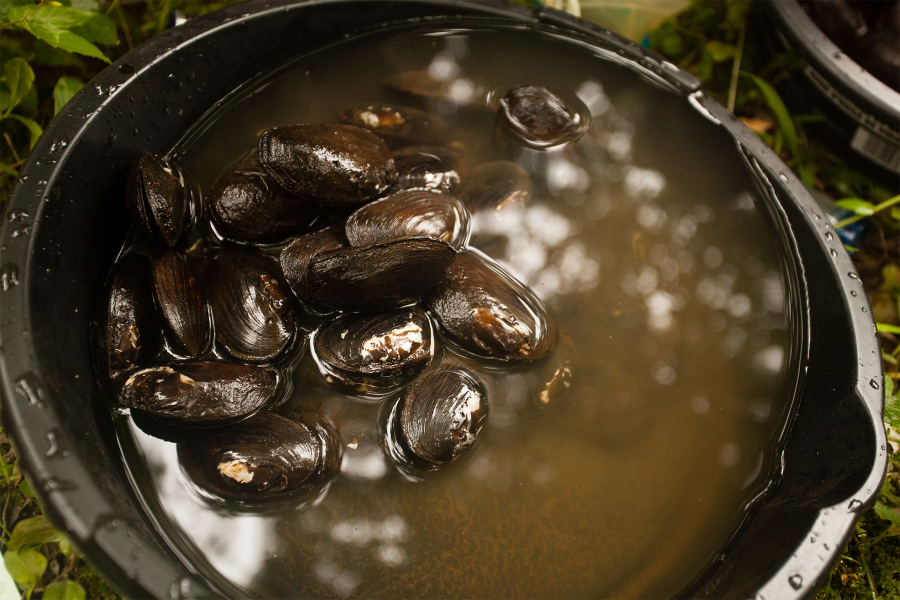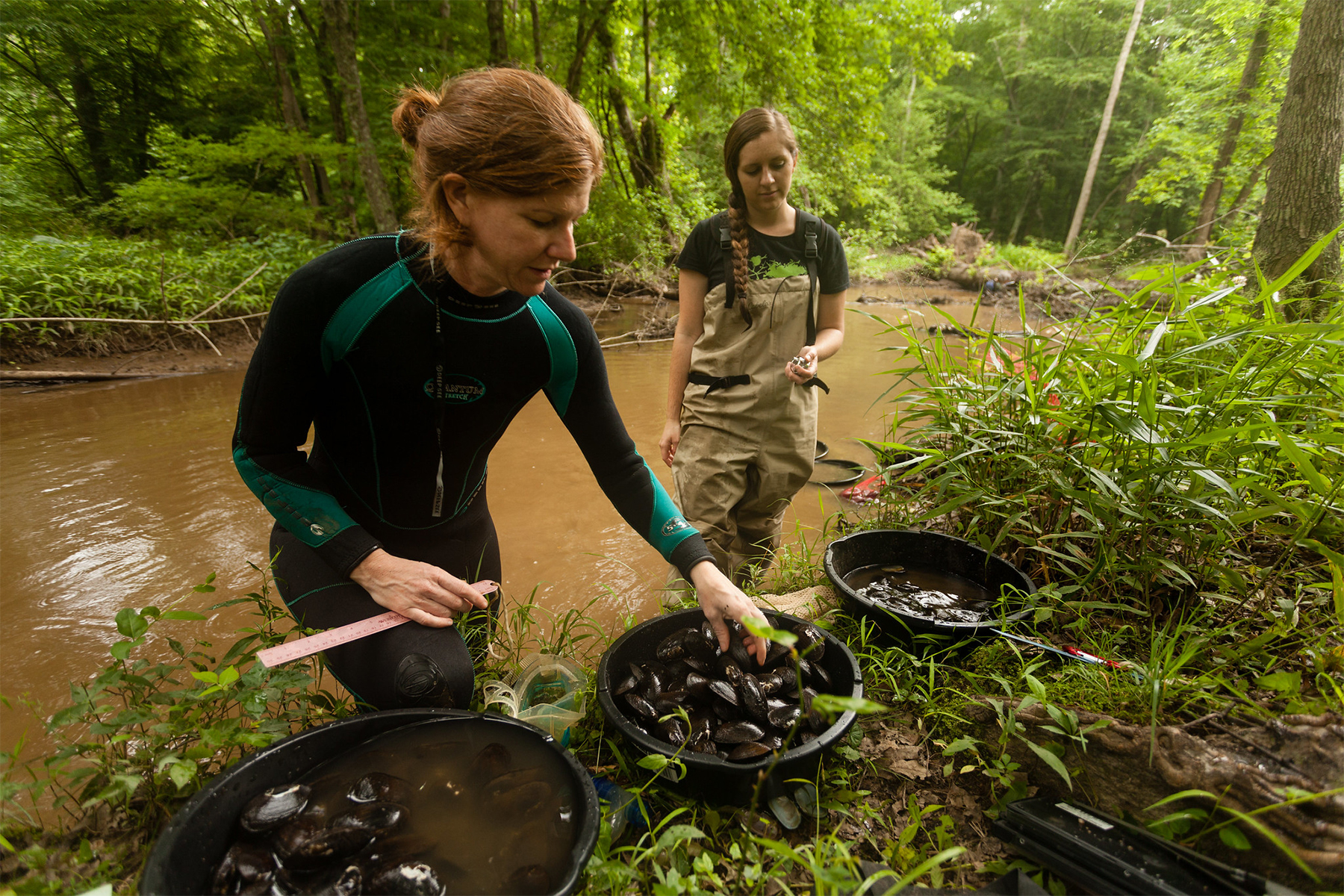Our rivers’ livers—freshwater mussels—have the potential to improve water quality

Oysters might be the most popular shellfish when it comes to filtering water, but because they can only survive in salty conditions, these bivalves aren’t of much use to the freshwater rivers and streams of the Chesapeake Bay watershed. However, there is a different type of shellfish that is available to help clean these regions: the mussel.
Mussels—a watershed wide hero
A new report from the Chesapeake Bay Program’s Scientific and Technical Advisory Committee (STAC) highlights the value of mussels to Chesapeake Bay restoration.
Unlike crabs and oysters, which you typically only find in Maryland and Virginia, freshwater mussels are found in all of the seven jurisdictions of the watershed—Delaware, the District of Columbia, Maryland, New York, Pennsylvania, Virginia and West Virginia. In particular, seven common species exist across the entire watershed: the creeper, eastern floater, green floater, yellow lampmussel, eastern elliptio, brook floater and triangle floater.
Mussels help improve water quality through filtration and denitrification—the process in which nitrogen is removed from water by transforming into gas. A single mussel can filter up to 15 gallons of water per day, preventing nutrients and other harmful pollutants from flowing downstream. They also help to remove small particulate matter like dirt particulates, which improves water clarity, or how clear water appears. Mussels provide food for aquatic species, and their beds are a source of habitat for small species.
Dr. Heather Galbraith, a water planning biologist with the Pennsylvania Fish and Boat Commission who contributed to the report, shared that, “a lot of people call them the ‘livers of our rivers’ because they filter things that are harmful to humans, like toxins and heavy metals out of the water that passes over them.”

Threats to mussels across the watershed
More than 25 different species of mussels call the Chesapeake Bay watershed home, but many are threatened or endangered. Threats to mussels include invasive species, climate change, habitat loss, toxic contaminants, polluted stormwater runoff as well as disease. Another risk to mussels that isn’t as well-known are dams. The construction and operation of dams drastically change water flow, stranding mussels out of the water or washing them downstream. Since mussels require a host fish to reproduce, when migratory fish cannot make their way around man-made structures like dams and culverts, some mussel beds become functionally extinct—the adults survive but no procreation can take place.
Mussels are sensitive to changes in water quality, although more research is needed to better understand the details. One stressor in particular is salt applied to roadways in wintery conditions. Since freshwater mussels cannot survive in saltwater, when road salt runs off impervious surfaces, like roads, and enter waterways, it contributes to their population declines. Additionally, in recent years, several cases of mussels dying en masse have made headlines. This phenomenon is referred to as “enigmatic mussel die-offs,” called so because we don’t yet understand why this happens.
Mussels show promise in improving water quality
The Chesapeake Bay Program’s Scientific and Technical Advisory Committee workshop came together in March 2020 to better understand the diversity of mussels throughout the watershed, how they are impacted by the current issues affecting the Bay and the potential for partners to be engaged in their restoration. Included in the report are several recommendations for how freshwater mussels can benefit the Bay restoration effort.
The potential exists for integrating mussels more into the work of the Chesapeake Bay Program, specifically within the Chesapeake Monitoring Cooperative (CMC) and Meaningful Watershed Educational Experiences (MWEE). The CMC has opportunities to develop guidance for community science mussel initiatives and how they can be used to gauge water quality improvements, while educators are encouraged to build freshwater mussels into their educational curriculum.
But the bottom line is that freshwater mussels are still very much an untapped resource when it comes to aiding in Bay restoration. While data exists from several sources around the watershed, it has not been compiled and gathered into one source. And more studies concentrated in the Chesapeake Bay watershed are needed to fully understand the great value of these mighty bivalves.
And similar to oyster restoration in the Bay, one cannot count on freshwater mussels to single-handedly restore water quality throughout the watershed, warns Dr. Danielle Kreeger, science director with the Partnership for the Delaware Estuary.
“We found that mussel restoration would be one more arrow in your quiver, but you cannot do mussel restoration unless you continue to double down on existing best management practices like buffers and cover crops.”

Comments
There are no comments.
Thank you!
Your comment has been received. Before it can be published, the comment will be reviewed by our team to ensure it adheres with our rules of engagement.
Back to recent stories